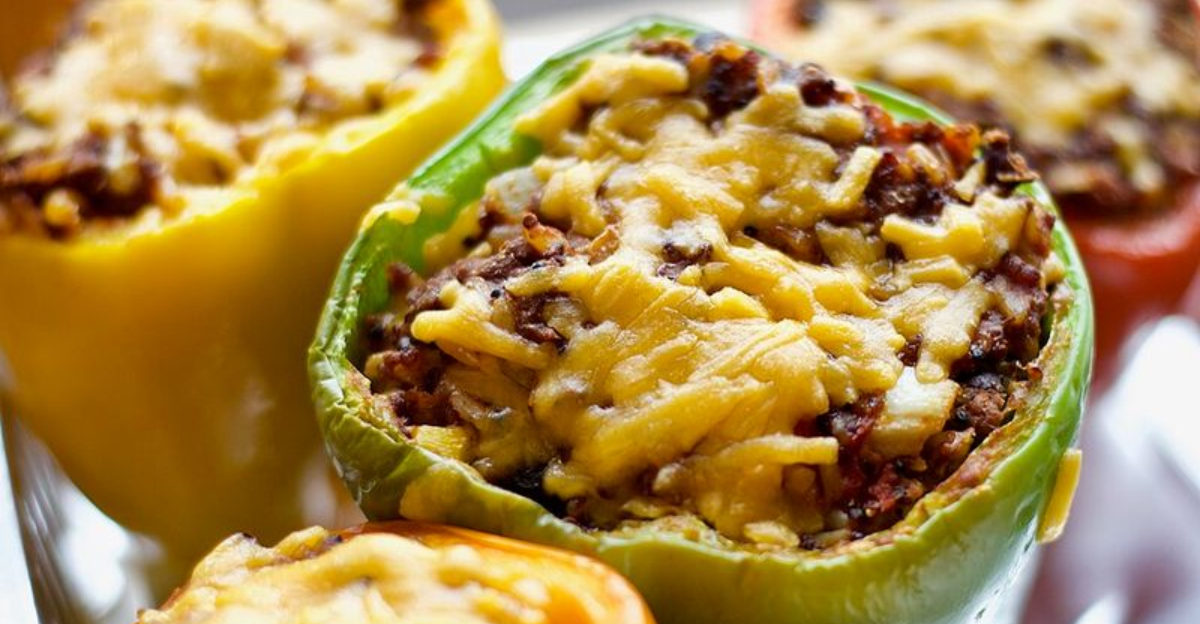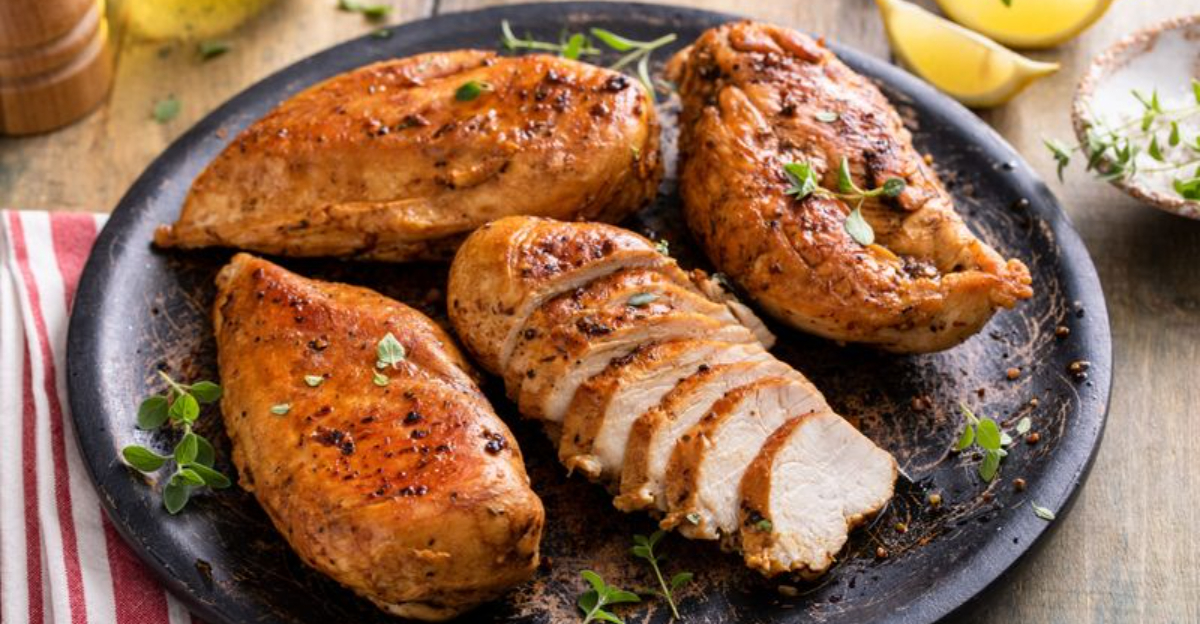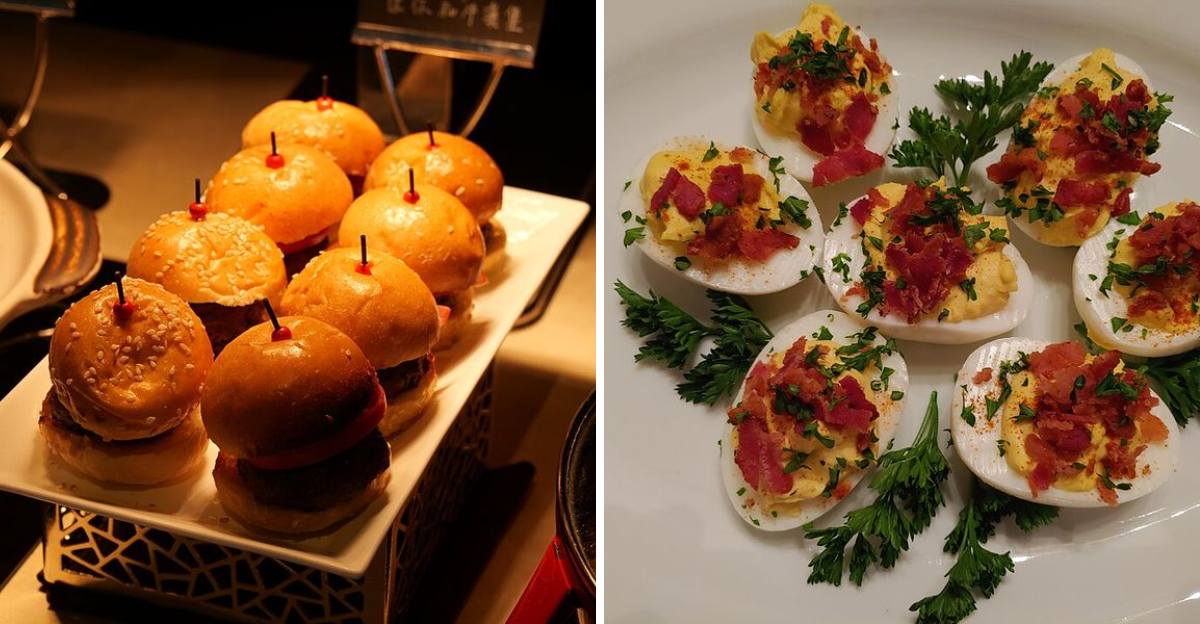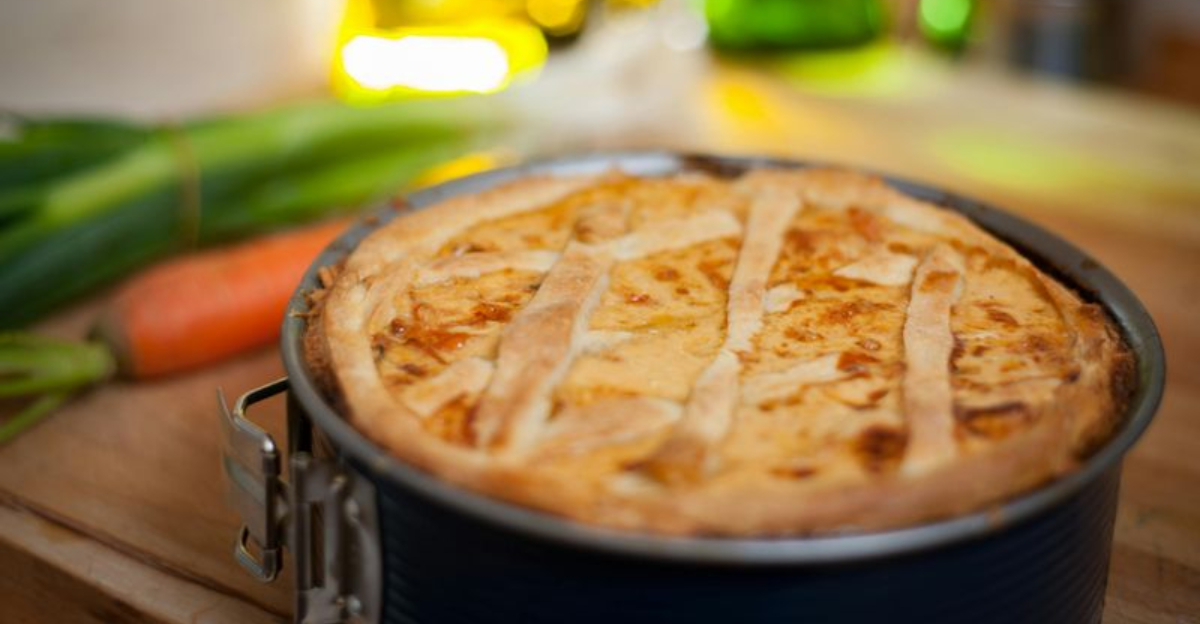16 Forgotten Breakfast Classics That Have Faded From Our Tables
Think back to the breakfasts of earlier generations and you’ll find a morning routine that feels almost unrecognizable today.
Long before drive-through coffee and grab-and-go pastries became the norm, grandparents and great-grandparents sat down to meals built around hearty ingredients, slow preparation, and simple comfort. Tables featured broiled grapefruit sprinkled with sugar, bowls of hot cereal cooked on the stove, and even savory fish plates that offered protein to fuel long days of work. These dishes reflected the seasons, local foods, and the belief that breakfast should be nourishing rather than rushed.
Over time, many of these classics faded as schedules tightened and modern preferences shifted toward convenience. Busy mornings replaced sit-down meals, and traditional recipes quietly disappeared from everyday kitchens. Looking back at these forgotten breakfasts offers a window into how American food culture has changed and a reminder of the flavors and traditions that once defined the start of the day.
Disclaimer: This article highlights forgotten breakfast classics that were once staples in American kitchens. While many of these dishes were beloved for their simplicity, they have largely fallen out of favor due to modern tastes, convenience, and changing breakfast trends. Ingredients and preparation methods may vary by region or tradition, so feel free to explore and experiment with these dishes to rediscover their nostalgic charm.
1. Classic Oatmeal Porridge
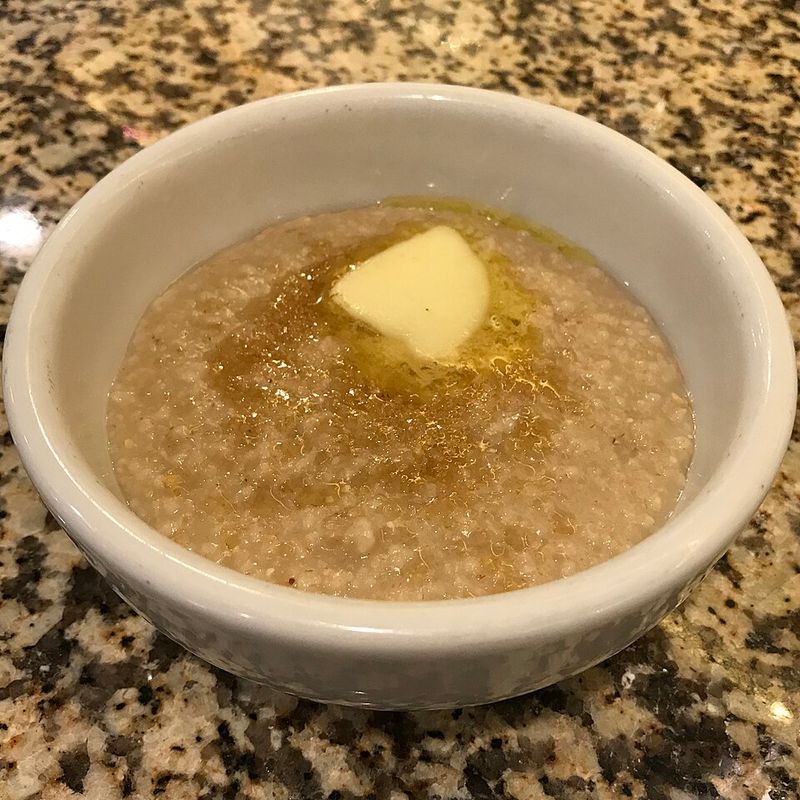
Before instant packets took over, oatmeal meant slowly cooked rolled oats stirred on the stovetop. Families would simmer their porridge for twenty minutes or more, creating a creamy, hearty breakfast.
Sweeteners were minimal – maybe a spoonful of sugar or some fresh berries. No fancy toppings, no chia seeds, no almond butter drizzle.
Just honest, filling oats that stuck to your ribs all morning long.
2. Cornmeal Mush Fried Slices

Cornmeal cooked into a thick porridge, then poured into a loaf pan and chilled overnight – that was step one. Step two? Slice that firm cornmeal loaf and fry the pieces in butter until crispy and golden.
The result was crunchy outside, creamy inside, and totally satisfying. Appalachian and rural families relied on this thrifty breakfast for generations.
However, convenience foods pushed it aside decades ago.
3. Creamed Chipped Beef On Toast
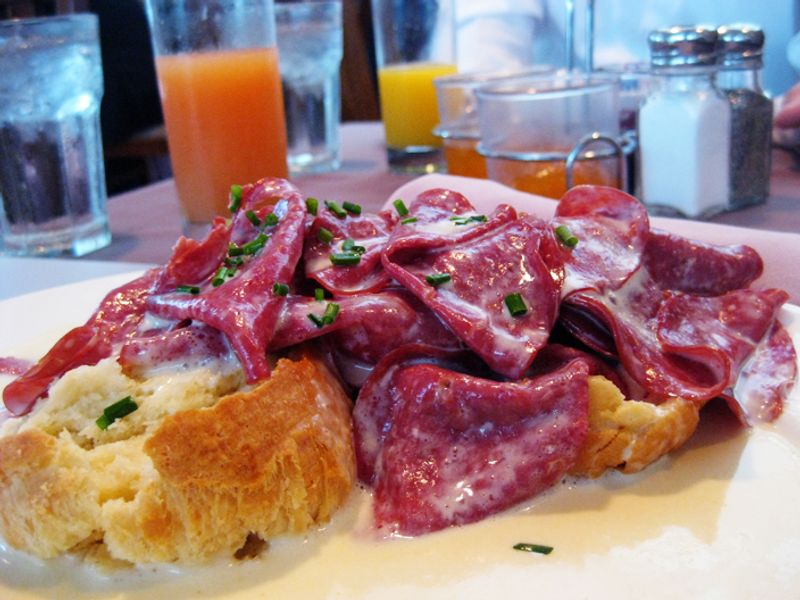
Affectionately nicknamed SOS by military folks, this dish featured dried beef in a thick white sauce poured over toast. The salty, savory flavor made it a filling breakfast that stretched ingredients during leaner times.
Diners and military mess halls served it by the plateful through the 1970s. Though it sounds strange now, people genuinely loved the comforting, stick-to-your-ribs quality.
Modern tastes prefer lighter morning fare.
4. Kedgeree
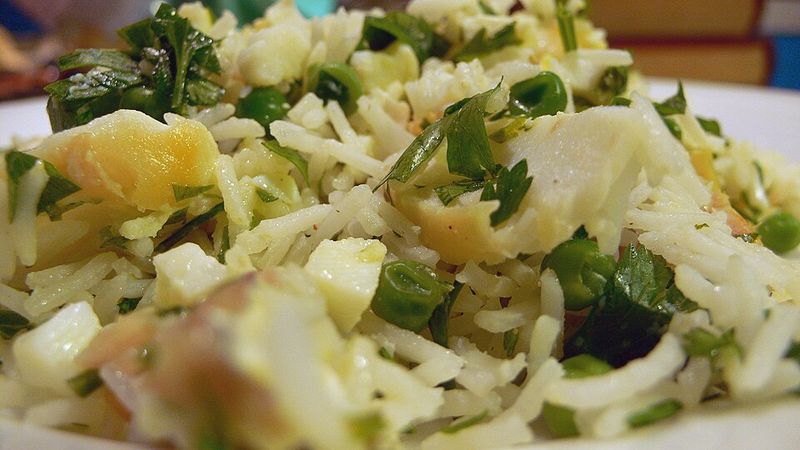
Smoked fish, fluffy rice, hard-boiled eggs, and curry spices combined into this Anglo-Indian breakfast favorite. British colonial influence brought kedgeree to breakfast tables, where it felt elegant and exotic.
The smoky fish paired surprisingly well with the warm spices and buttery rice. Proper Victorian and Edwardian households served it at lavish breakfast buffets.
Though still made occasionally in Britain, it has nearly vanished elsewhere.
5. Kippers For Breakfast

Smoked herring, split and cooked until hot, brought bold, salty flavor to the breakfast table. British and Scottish households considered kippers a proper way to start the day, often paired with bread and butter.
The strong, fishy aroma filled the kitchen, which some loved and others couldn’t stand. Protein-packed and flavorful, they fueled hard-working mornings.
Nowadays, most people skip fish entirely at breakfast time.
6. Grits And Eggs
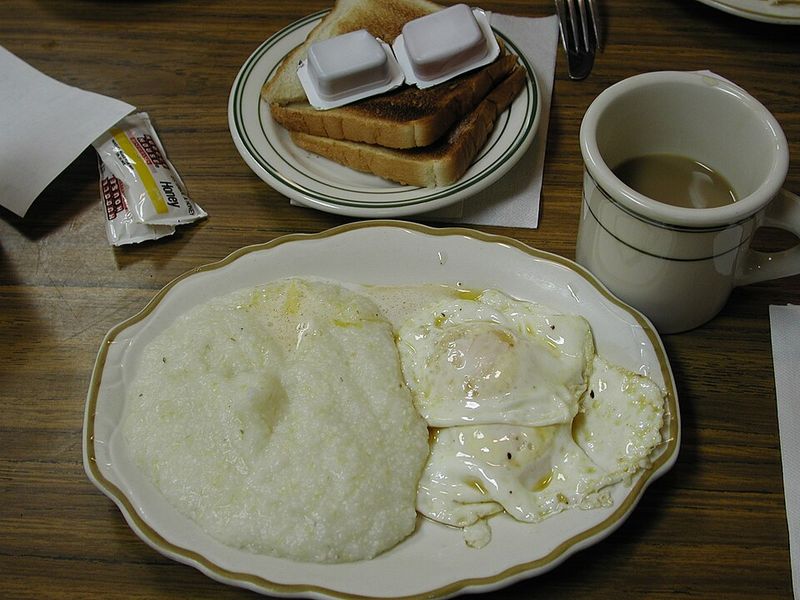
Ground corn cooked into smooth, creamy grits formed the base of countless Southern breakfasts. Topped with butter, salt, and pepper, grits paired perfectly with eggs cooked any style.
This combination fueled farmers, factory workers, and families for generations across the South. While grits haven’t disappeared entirely, they are far less common outside their regional stronghold.
Many younger Americans have never even tried them once.
7. Scrapple Breakfast Plate

Pennsylvania Dutch ingenuity created scrapple: pork scraps mixed with cornmeal, formed into a loaf, then sliced and fried crispy. The result was crunchy outside, soft inside, and packed with savory flavor.
Mid-Atlantic diners served scrapple alongside eggs and toast for decades. Though it sounds odd to outsiders, locals considered it a breakfast treasure.
Today, scrapple remains a regional curiosity rather than a national staple.
8. Broiled Grapefruit Half

Picture this: a citrus fruit treated like dessert for breakfast. Grapefruit halves got sprinkled with sugar, sometimes brown sugar, then slid under the broiler until bubbly and caramelized.
The heat softened the tart fruit and created a sweet, slightly charred top layer. Health-conscious diners in the 1950s and 60s loved this as a “light” way to start the day.
Today, most people just peel and eat their grapefruit cold, if they eat it at all.
9. Rice Pudding For Breakfast

Leftover rice transformed into sweet, creamy pudding made a thrifty and comforting breakfast. Cooked with milk, sugar, and sometimes raisins or cinnamon, rice pudding felt like a warm hug in a bowl.
Grandmothers across America made this for their families, especially during colder months. The gentle sweetness and soft texture appealed to kids and adults alike.
However, rice pudding now feels more like dessert than breakfast.
10. Baked Apple

Cored apples filled with sugar, cinnamon, and sometimes raisins, then baked until tender, made a wholesome breakfast treat. The apples would soften completely, releasing sweet, spiced juices that pooled at the bottom.
Old cookbooks frequently featured baked apples as a morning dish, not just dessert. Families enjoyed them warm, sometimes with a splash of cream.
Nowadays, baked apples appear only as occasional desserts, if at all.
11. Old Fashioned Coffee Cake

Tender cake topped with buttery streusel crumbs was designed specifically to accompany morning coffee. Not overly sweet, coffee cake provided just enough flavor to complement a hot cup without overwhelming it.
Bakeries and home kitchens turned out coffee cakes for breakfast gatherings and Sunday mornings. The crumbly topping and moist cake felt sophisticated yet simple.
Though still around, coffee cake rarely appears on everyday breakfast tables anymore.
12. Soft Boiled Egg In A Cup

Boiling an egg just until the white set but the yolk stayed runny created this classic breakfast. Served upright in a special egg cup, diners would crack the top and dip buttered toast strips – called soldiers – into the golden yolk.
British and American families alike enjoyed this ritual. The combination of textures and flavors felt both elegant and playful.
Today, most people scramble or fry their eggs instead.
13. Popovers

Made from a thin batter similar to Yorkshire pudding, popovers baked into dramatic, hollow rolls that puffed sky-high. The crispy outside and airy inside made them perfect for slathering with butter and jam.
Breakfast tables in the early-to-mid 1900s often featured a basket of fresh popovers. Their theatrical rise in the oven delighted home cooks.
Though impressive, they require more effort than modern breakfasts allow.
14. Stewed Prunes

Dried plums simmered gently in water until plump and tender created this old-time breakfast staple. Hotels and diners routinely offered stewed prunes alongside eggs and toast through the mid-20th century.
Though they were valued for their digestive benefits, younger generations found them less appealing. The sweet-tart flavor and soft texture felt more medicinal than delicious.
Nowadays, prunes rarely appear on breakfast menus anywhere.
15. Cottage Cheese Bowl
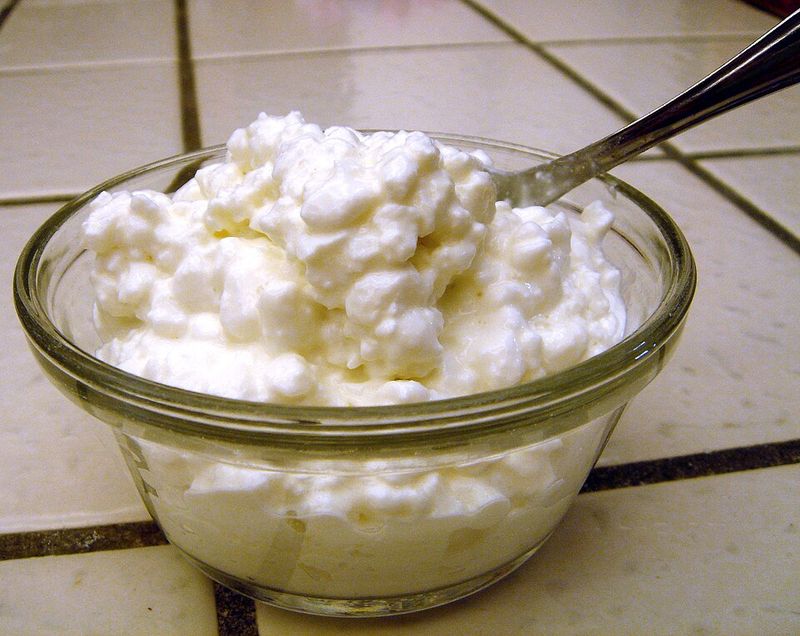
Plain cottage cheese served in a bowl, sometimes with fruit on the side, made a protein-packed breakfast for health-conscious eaters. The mild, slightly tangy flavor and creamy curds felt light yet satisfying.
Diet culture of the 1960s and 70s popularized cottage cheese as a virtuous breakfast choice. People ate it with sliced peaches, pineapple, or even just salt and pepper.
However, Greek yogurt has largely replaced it today.
16. Shirred Eggs In Ramekins
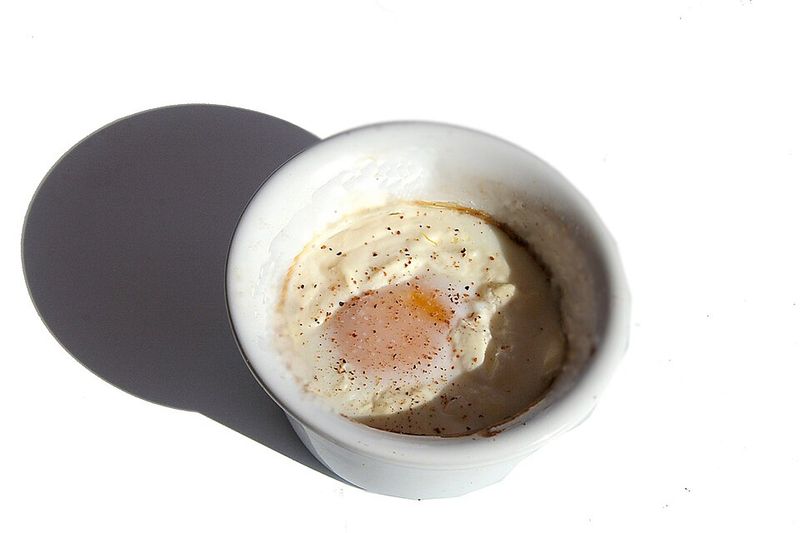
Eggs cracked into buttered ramekins, topped with cream, then baked until just set created this elegant breakfast. The creamy, gently cooked eggs felt fancy enough for special occasions but simple enough for everyday mornings.
Victorian and Edwardian cookbooks featured shirred eggs prominently. They required minimal effort but looked impressive on the breakfast table.
Nowadays, baked eggs appear mostly in brunch restaurants, not home kitchens.

